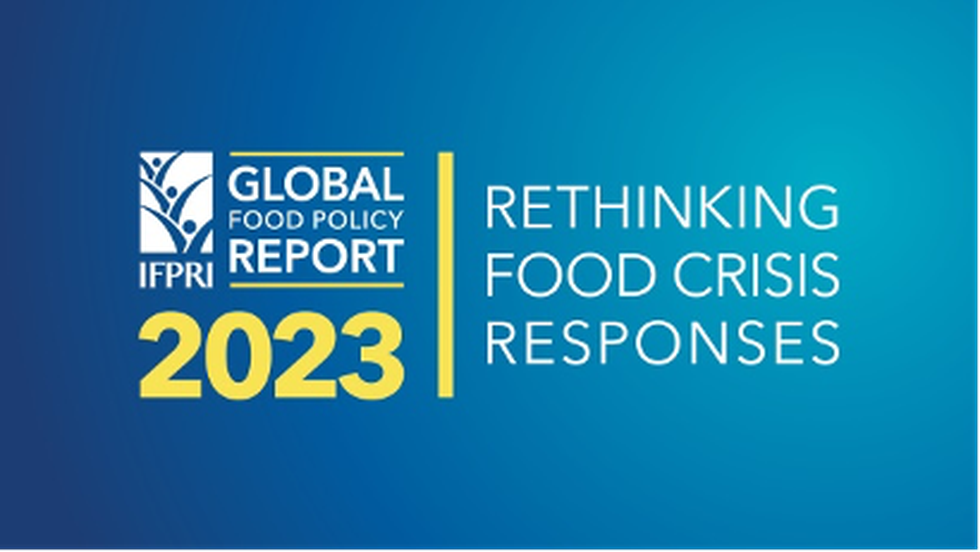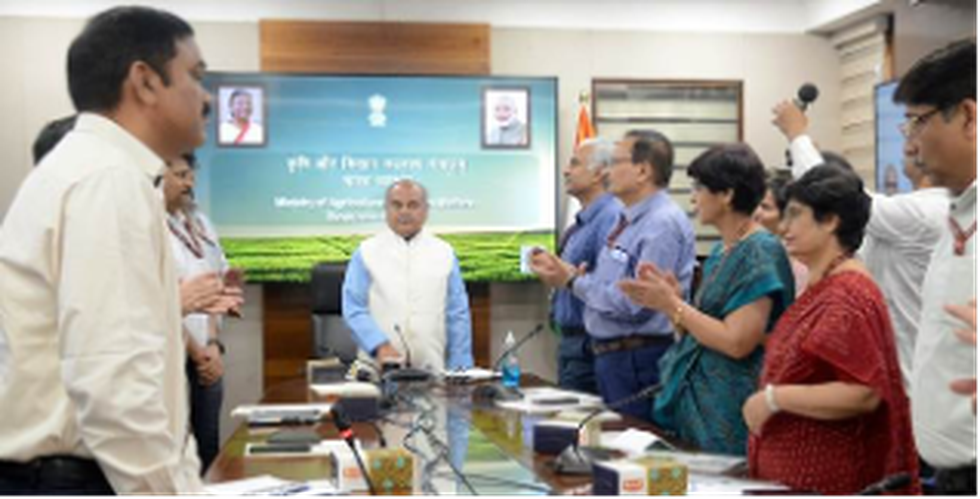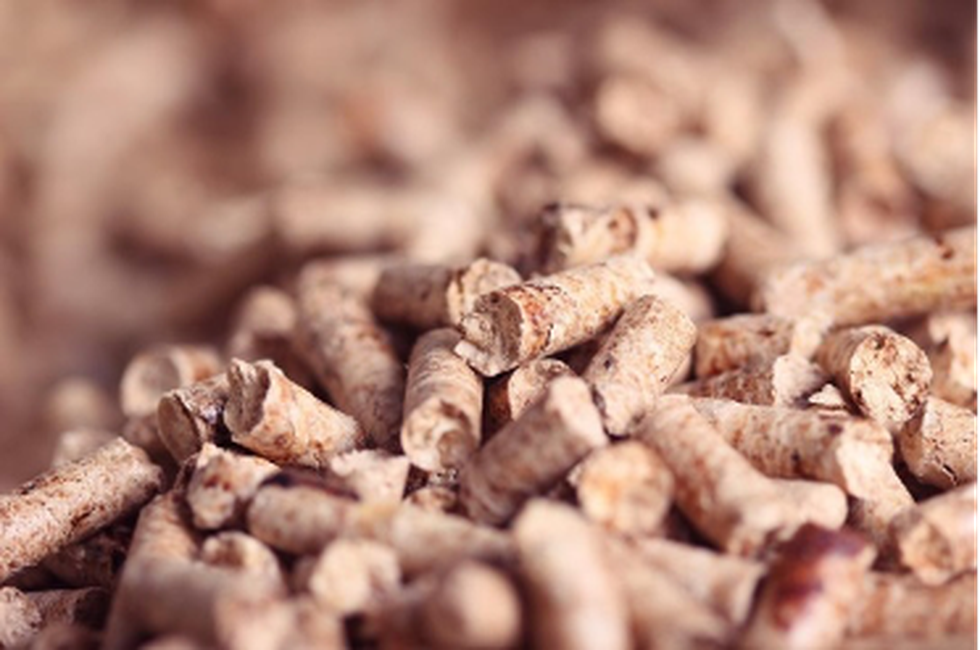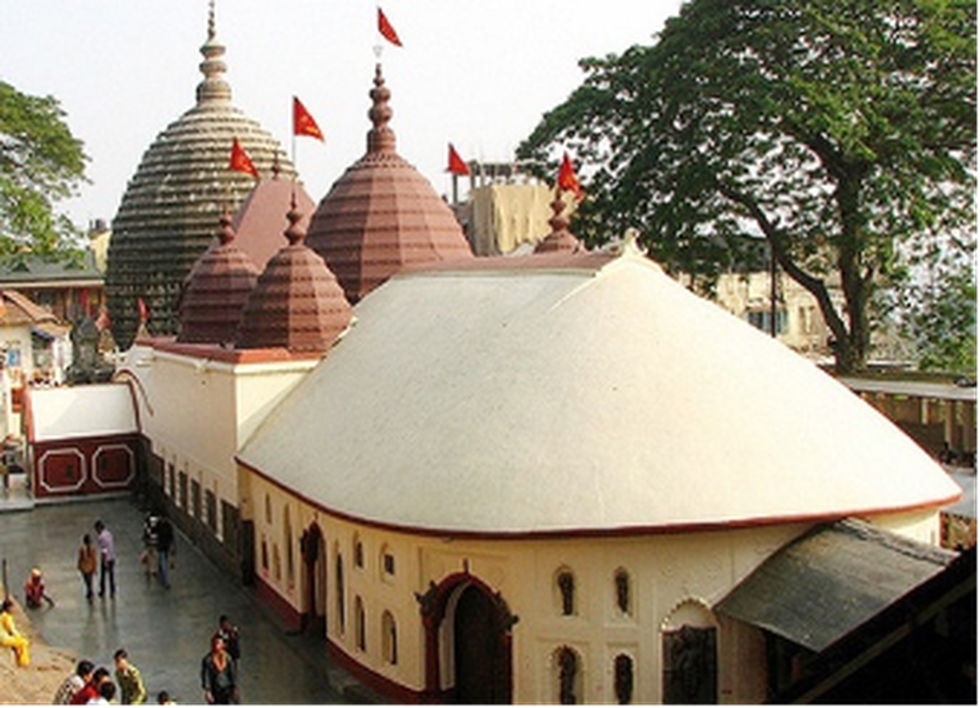
About Carbon Border Adjustment Mechanism (CBAM):
- What is it? It is a proposed European Union (EU) tariff on carbon intensive products.
- Purpose: To put a fair price on the carbon emitted during the production of carbon intensive goods that are entering the EU , and to encourage cleaner industrial production in non-EU countries.
- The CBAM will ensure the carbon price of imports is equivalent to the carbon price of domestic production.
- If implemented as planned, EU importers will have to buy carbon certificatescorresponding to the carbon price that would have been paid in the EU, if the goods had been produced locally.
- The price of the certificates would be calculated according to the auction prices in the EU carbon credit market.
- The amount of certificates required would be defined yearly by the quantity of goods and the embedded emissions in those goods imported into the EU.
- Companies in countries with a domestic carbon pricing regime equivalent to the EU’s will be able to export to the EU without buying CBAM certificates.
- CBAM will initially cover several specific products in some of the most carbon-intensive sectors at risk of "carbon leakage": iron and steel (including some downstream products such as nuts and bolts), cement, fertilizers, aluminium, electricity and hydrogen.
2. Audit Quality Maturity Model (AQMM)

Why in News?
- The Institute of Chartered Accountants of India (ICAI) has mandated the firms to undertake audit quality maturity evaluation through AQMM w.e.f. 1st of April 2023.
- The mandate covers the firms auditing (a) A listed entity; (b) Bank other than a co-operative bank (except multi-state co-operative bank); or (c) an Insurance Company.
- Those firms which are conducting only branch audits are excluded from this mandate.
About Audit Quality Maturity Model (AQMM):
- It is a tool for the self-evaluation of audit firms & sole proprietors towards technologically driven mechanisms to increase operational efficiency.
- AQMM is an amalgamation of a well-researched set of Audit Quality Indicators (AQIs).
- It is a cross-functional evaluation model covering key areas of not only audit engagements but also audit practice at the firm level.
- It includes operations of the firm, viz. revenue budgeting and pricing, audit practice manual, budgeting of engagements, timesheet, use of technology adoption, quality control for engagements, Human Resource Management including resource planning and monitoring, performance evaluation and compensation, physical and IT infrastructure.
- The AQMM model is structured into 3 sections with a total score of 600 points,
- Practice Management (Operation);
- Human Resource Management;
- Practice Management -Strategic/Functional;
- Based on the score(s) obtained under each of the sections, the firm shall arrive at a level ranging from Level 1 to 4.
- While Level 1 depicts that the firm is very nascent, Level 4 indicates that the firm has made significant adoption of standards and procedures.
Key facts about Institute of Chartered Accountants of India (ICAI):
- It is a statutory body established by an Act of Parliament, viz. The Chartered Accountants Act, 1949.
- Mandate: Regulating the profession of Chartered Accountancy in the country; Formulation of Accounting Standards; and Prescription of Standard Auditing Procedures.
- It functions under the administrative control of the Ministry of Corporate Affairs, Government of India.
- The affairs of the ICAI are managed by a Council which comprises of 40 members, of whom 32 are elected by the Chartered Accountants and the remaining 8 are nominated by the Central Government.
3. Biodiversity Heritage Sites (BHS)

About Biodiversity Heritage Sites (BHS):
- BHS are unique ecosystems having rich biodiversity comprising of any one or more of the following components:
- Richness of wild as well as domesticated species or intra-specific categories.
- High endemism.
- Presence of rare and threatened species, keystone species, and species of evolutionary significance.
- Wild ancestors of domestic/cultivated species or their varieties.
- Past pre-eminence of biological components represented by fossil beds and having significant cultural, ethical or aesthetic values and are important for the maintenance of cultural diversity, with or without a long history of human association with them.
- Under Section-37 of the Biological Diversity Act, 2002, the State Government, in consultation with local bodies, may notify areas of biodiversity importance as BHS.
- The State Government, in consultation with the Central Government, may frame rules for the management and conservation of BHS.
- The creation of BHS may not put any restriction on the prevailing practices and usages of the local communities other than those voluntarily decided by them.
- The purpose of declaring BHS is to enhance the quality of life of the local communities through the conservation of such sites.
- In 2007, the Nallur Tamarind Grove in Bengaluru, Karnataka, was designated as India's first BHS.
Key facts about Biological Diversity Act, 2002:
- It is an Act of the Parliament of India for the preservation of biological diversity in India and provides a mechanism for the equitable sharing of benefits arising out of the use of traditional biological resources and knowledge.
- It was enacted to meet the obligations under the Convention on Biological Diversity (CBD), as India is a party to it.
- Key Provisions:
- The Act defines, Biological resources as “plants, animals and micro-organismsor parts thereof, their genetic material and by-products (excluding value added products) with actual or potential use or value, but does not include human genetic material.”
- The Act provides measures for safeguarding traditional knowledge and practices, preservation of rare and threatened species and prevention of bio-piracy.
- Under the Act, the National Biodiversity Authority (NBA) has been formed and is headquartered in Chennai. State Biodiversity Boards (SBBs) also have been formed in all Indian states.
- The Act mentions that every local body shall constitute a Biodiversity Management Committee within its area for the purpose of promoting conservation, sustainable use and documentation of biological diversity.

About United Nations Capital Development Fund (UNCDF):
- What is it?
- It is the United Nations' flagship catalytic financing entity for the world's 46 Least Developed Countries (LDCs).
- It is an autonomous, voluntarily funded UN organization, affiliated with the UN Development Programme (UNDP).
- Mandate: The original UNCDF mandate from the UN General Assembly (UNGA) 1966 Resolution is to “assist developing countries in the development of their economies by supplementing existing sources of capital assistance by means of grants and loans”. The mandate was modified in 1973 to serve first and foremost but not exclusively the LDCs.
- It is the only UN agency mandated to focus primarily on the least developed countries (LDCs),
- It works to invest and catalyse capital to support to LDCs in achieving the sustainable growth and inclusiveness envisioned by the 2030 Agenda for Sustainable Development and the Doha Programme of Action for the least developed countries, 2022–2031.
- It provides investment capital and technical support to both the public and the private sectors.
Key facts about Atal Innovation Mission (AIM):
- AIM is the Government of India’s flagship initiative to promote a culture of innovation and entrepreneurship in the country and was set up in 2016.
- Objective: To create and promote an ecosystem of innovation and entrepreneurship across the country at school, university, research institutions, MSME and industry levels.
- All the initiatives of AIM are currently monitored and managed systematically using real-time MIS systems and dynamic dashboards.
- Implementing Agency: NITI Aayog
- AIM has multiple programs to encourage and support innovation in the country.
- Atal Tinkering Labs: At the school level, AIM is setting up state-of-the-art Atal Tinkering Labs (ATL) across all districts across the country to promote creative, innovative mindset in schools.
- Atal Incubators: At the university, NGO, SME and Corporate industry levels, AIM is setting up world-class Atal Incubators (AICs) that would trigger and enable the successful growth of sustainable startups in every sector /state of the country thereby promoting entrepreneurs and job creators in the country.
- Atal New India Challenges and Atal Grand Challenges:
- They are being launched in specific areas and sectors of national importance - such as Renewable Energies, Energy Storage, Climate-smart precision agriculture, Universal drinking water, Swaach Bharat, etc.
- The successful applicants will get a grant of upto Rs 1 crore for Atal New India Challenges and larger grants of upto Rs 30 crore for Atal Grand Challenges.
5. Sloth Bear

About Sloth Bear:
- Sloth bears are one of the eight bear species found across the world.
- Scientific Name: Melursus ursinus
- Distribution:
- Their range includes India, Sri Lanka and southern Nepal.
- 90% of the global Sloth Bear population is found in India.
- Habitat: They live in a variety of dry and moist forests and in some tall grasslands, where boulders, scattered shrubs and trees provide shelter.
- Features:
- They have long, shaggy dark brown or black fur and curved claws, which are the longest out of any of the bear species.
- They use their claws to excavate termites and ants.
- Size: They grow 5 to 6 feet (1.5 to 2 meters) long, stand 2 to 3 feet (0.5 to 1 meters) high at the shoulder, and weigh, on average, 90 to 140 kilograms.
- They have poor senses of sight and hearing but a good sense of smell.
- Sloth bears' nostrils can close completely, protecting the animals from dust or insects when raiding termite nests or beehives.
- Conservation Status:
- IUCN: Vulnerable
- Indian Wildlife Protection Act, 1972: Schedule 1
6. Global Food Policy Report 2023

Key highlights of the report:
- The report called for a more proactive response to food system shocks with a focus on three key areas:
- Crisis prediction and preparation
- Building resilience before and during crises
- Making crisis response supportive and inclusive of women, forced migrants and other vulnerable groups.
- It advocated for strengthening agrifood value chains to support livelihoods and food security during crises.
- It advised governments to maintain a business environment that fosters flexibility, and technical and financial innovation.
Key facts about the International Food Policy Research Institute (IFPRI)
- It was established in 1975 and provides research-based policy solutions to sustainably reduce poverty and end hunger and malnutrition in developing countries.
- Headquarters: Washington, D.C
- It is a research centre of CGIAR, which is the world’s largest agricultural innovation network.
- Its research focuses on five strategic research areas:
- Fostering Climate-Resilient and Sustainable Food Supply
- Promoting Healthy Diets and Nutrition for Al
- Building Inclusive and Efficient Markets, Trade Systems, and Food Industry
- Transforming Agricultural and Rural Economies
- Strengthening Institutions and Governance
7. SATHI Portal

About SATHI Portal:
- The Seed Traceability, Authentication and Holistic Inventory (SATHI) portal is a Centralized Online System designed to deal with the challenges of seed production, quality seed identification and seed certification.
- It has been developed by the National Informatics Centre (NIC) in collaboration with the Union Ministry of Agriculture and Farmers Welfare on the theme of ‘Uttam Beej – Samriddh Kisan.
- There will be a QR code under this system, through which the seeds can be traced.
- It will ensure a quality assurance system, and identify the source of seed in the seed production chain.
- The system will consist of integrated 7 verticals of the seed chain - Research Organisation, Seed Certification, Seed Licensing, Seed Catalogue, Dealer to Farmer Sales, Farmer Registration and Seed DBT.
- Seeds with valid certification can only be sold by valid licensed dealers to centrally registered farmers who will receive a subsidy through DBT directly into their pre-validated bank accounts.
Key facts about the National Informatics Centre
- It was established in the year 1976 to provide technology-driven solutions to Central and State Governments.
- It works under the Union Ministry of Electronics and Information Technology (MeitY).
8. Garbh-Ini programme

About the Garbh-Ini programme:
- It promotes Maternal and Child Health and develops prediction tools for preterm birth.
- It is an initiative under the Department of Biotechnology of the Union Ministry of Science and Technology as a collaborative interdisciplinary programme.
- This program is led by the Translational Health Science and Technology Institute (THSTI), NCR Biotech cluster, Faridabad.
- It is part of the Atal JaiAnusandhan Biotech Mission - Undertaking Nationally Relevant Technology Innovation (UNaTI).
What is single nucleotide polymorphism (SNP)?
- It is the most common type of genetic variation among people.
- Each SNP represents a difference in a single DNA building block, called a nucleotide.
- For example, an SNP may replace the nucleotide cytosine (C) with the nucleotide thymine (T) in a certain stretch of DNA.
- Most commonly these are found in the DNA between genes.
- Significance:
- These help in predicting an individual’s response to certain drugs, susceptibility to environmental factors such as toxins, and risk of developing diseases.
- These can also be used to track the inheritance of disease-associated genetic variants within families.
- They can act as biological markers which help scientists locate genes that are associated with the disease.
What is a pre-term birth?
- It is defined as babies born alive before 37 weeks of pregnancy are completed. There are sub-categories of preterm birth, based on gestational age:
- Extremely preterm (less than 28 weeks)
- Very preterm (28 to 32 weeks)
- Moderate to late preterm (32 to 37 weeks).
9. Biomass pellets

About Biomass pellets:
- These are a type of renewable fuel made from organic materials such as wood, agricultural residues, and energy crops.
- These are produced by compressing organic materials under high pressure.
- The compression process removes the moisture content and increases the energy density of the biomass.
- It is mandatory in India to use biomass or agricultural residue as combustion fuel along with coal in coal-fired thermal power plants.
- The biomass used for co-combustion in the power plants is processed and refined into pellets with a calorific value comparable to coal.
- These are two kinds
- Torrefied: It is processed at 250-350°C in the absence of oxygen, leading to the formation of torrefied biomass.
- Non-torrefied: In this biomass is shredded, grinded and sent to a pellet reactor, where it is compressed into pellet form with the help of binders such as sawdust, bagasse, molasses, starch and others.
What is Torrefaction?
- It is a thermochemical process that aims to decrease the water and volatile contents from the biomass, thus improving some of its fuel properties like higher energy density, hydrophobic behaviour, elimination of biological activity etc.
Key Facts about Central Pollution Control Board
- It is a statutory body under the Ministry of Environment, Forest and Climate Change.
- It was constituted under the Water (Prevention and Control of Pollution) Act, 1974.
- It is entrusted with the powers and functions under the Air (Prevention and Control of Pollution) Act, 1981.
- It serves as a field formation and also provides technical services to the Ministry of Environment and Forests of the provisions of the Environment (Protection) Act, 1986.
- The principal Functions of the CPCB, as spelt out in the Water (Prevention and Control of Pollution) Act, 1974, and the Air (Prevention and Control of Pollution) Act, 1981 are;
- To promote the cleanliness of streams and wells in different areas of the States by prevention, control and abatement of water pollution, and
- To improve the quality of air and to prevent, control or abate air pollution in the country.
10. Kamakhya temple

About Kamakhya temple:
- It is situated on Nilachal Hill and adjoining the southern bank of the Brahmaputra River in Guwahati,
- It is one of the most revered centres of Tantric practices.
- It is regarded as one of the oldest of the 51 Shakti Peethas in India.
- Temple Architecture:
- It had been modelled out of a combination of two different styles namely, the traditional nagara or North Indian and Saracenic or Mughal style of architecture.
- This unusual combination has been named the Nilachala Style of Architecture.
- This is the only temple of Assam having a fully developed ground plan.
- It consists of five chambers, garbhagriha or sanctuary, antarala or vestibule, Jagan Mohan or principal chamber, bhogmandir or ritual chamber and natmandir or opera hall for performing traditional dance and music associated with sukti temples.
- It is interesting to note that the superstructure of each of the above chambers exhibits different architectural features.
- While the main temple contains a modified Saracenic dome, the antarala carries a two-roofed design, the bhogmandir (also called pancharatna) with five domes similar in appearance to the main temple and the natmandir having a shell-roof with apsidal end similar to some of the impermanent namghars or prayer halls found in Assam.
Ambubachi Mela is one of the major festivals of this temple. The festival is held every year to commemorate the yearly menstruation of Goddess Kamakhya




.jpg)
























































































































































.png)
.png)
.png)
.png)
.png)


.png)
.png)
.png)





.png)
.png)






.png)
.png)
.png)
.png)
.png)
.png)
.png)
.png)
.png)

.png)







.png)
.png)


.png)
.png)
.png)


.png)

.png)
.png)





.jpg)

.png)
.png)


.png)

.png)
.png)
.png)

.jpg)

.jpg)


.png)

.png)
.png)
.png)
.png)
.png)
.png)
.png)
.png)
.png)
.png)




.png)

.png)





.png)
.png)
.png)
.png)
.png)
.png)
.png)
.png)
.png)
.png)
.jpg)
.jpg)

.png)
.png)
.png)
.png)
.png)
.png)
.png)
.png)
.png)
.png)
.png)
.png)
.png)
.png)
.png)
.png)
.png)
.png)
.png)
.png)
.png)
.png)



.png)
.png)

.jpg)
.jpg)


.jpg)
.jpg)
.jpg)
.jpg)
.jpg)

.jpg)








.jpg)
.jpg)
.jpg)
.jpg)















.jpg)
.jpg)







.jpg)


















.jpg)
.jpg)






























































































.jpg)
.jpg)


























.jpg)

.jpg)










.jpg)








.jpg)




.jpg)










.jpg)


















.jpg)












































.jpg)














.jpg)
.jpg)
.jpg)





.jpg)

.jpg)
.jpg)





































































.jpg)


































.jpg)
.jpg)
















































.jpg)












.jpg)


.jpg)




.jpg)
.jpg)
.jpg)

.jpg)
.jpg)
.jpg)
.jpg)

.jpg)
.jpg)
.jpg)

.jpg)
.jpg)
.jpg)
.jpg)
.jpg)
.jpg)
.jpg)
.jpg)

.jpg)


.jpg)
.jpg)
.jpg)
.jpg)
.jpg)
.jpg)
.jpg)
.jpg)
.jpg)
.jpg)











.jpg)
.jpg)





.jpg)
.jpg)
.jpg)
























.jpg)
























.jpg)









.jpg)
.jpg)







.jpg)
.jpg)









































.jpg)
.jpg)
.jpg)
.jpg)
.jpg)

.jpg)
.jpg)
.jpg)
.jpg)
.jpg)


.jpg)
.jpg)
.jpg)
.jpg)
.jpg)

.jpg)
.jpg)
.jpg)
.jpg)
.jpg)
.jpg)
.jpg)
.jpg)
.jpg)
.jpg)
.png)

.png)
.png)

.png)
.png)
.png)
.png)


.jpg)
.jpg)

.jpg)
.jpg)
.jpg)

.png)
.png)
.png)
.png)
.png)
.png)
.png)

.png)
.png)
.png)
.png)
.png)
.png)
.png)
.png)
.png)
.png)





































































-min.png)



.png)




.png)








































